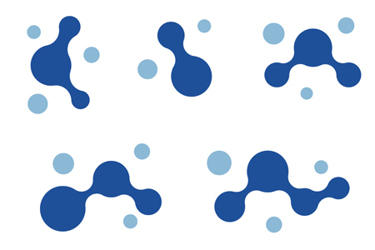3 Nanotech Breakthroughs Revolutionizing Water Purification Worldwide

By Emily Newton

From graphene membranes to metal nanoparticles, nanotechnology is reshaping water purification with faster, cleaner, and more energy-efficient solutions.
The world has enough water, but not enough clean water. Conventional treatment trains and municipal plants that were once reliable workhorses are straining to keep up with a new generation of threats and increased demand.
Persistent microplastics, antibiotic-resistant microbes, and trace industrial contaminants can slip through filters without detection. Engineers tasked with protecting public health must monitor when and where gaps in the current systems will appear.
Nanotechnology in water purification is a rising intervention operating at scale where chemistry, surface physics, and biology intersect. It rewrites the rulebook by enabling higher selectivity and treatment options that work where bulk materials cannot.
A Primer On Nanomaterials In Water Purification
Nanomaterials are engineered particles with at least one dimension measured to less than 100 nanometers whose behavior is dominated by surface phenomena. Because particle size shrinks much more quickly than surface area, nanoparticles offer enormous specific surface areas, which increases the number of reactive sites per gram.
This is important for water treatment because reaction rates, adsorption capacity, catalytic turnover, and interfacial phenomena scale with available surface area. That makes nanomaterials effective for:
- Concentrating trace contaminants through high-capacity adsorption.
- Catalyzing destructive pathways.
- Providing highly selective separations when embedded in membranes.
The high surface activity affects stability and fate, so dosing and surface functionalization are essential design steps.
The Nanomaterials Forging The Future Of Filtration
Nanomaterials are pushing filtration past passive sieving into an era of active, chemistry-driven solutions.
Graphene and Carbon Nanotubes
Graphene oxide (GO) and carbon nanotube (CNT) materials are game-changers for membranes because they integrate extremely thin selective layers with engineered surface chemistry. GO laminates can be stacked to form nanometer-scale channels. That lets engineers build membranes that reject dissolved organics and small ions while allowing high water flux with far lower pressure than reverse osmosis stacks.
CNT-enhanced membranes take a complementary approach. They form near-frictionless water pathways that support high permeation, while the tube walls capture specific contaminants. In practice, two outcomes take shape. The first is high throughput for desalination and brackish-water treatment with reduced energy intensity, and the second is built-in adsorption and selectivity for trace organics and microplastics.
Still, some challenges exist, including making defect-free GO laminates at scale, preventing CNT release, and managing fouling. Therefore, most utilities consider GOs and CNTs first in starter modules or as blended layers inside conventional membranes.
Metallic Nanoparticles
Metal and metal-oxide nanoparticles are valuable because they add active chemistry to passive filtration. Silver and zinc oxide exert antimicrobial activity through multiple pathways, such as membrane disruption, metal-ion release, and reactive oxygen species. When immobilized on filter media, these abilities enable chemical-free or lower-chemical disinfection options.
Titanium dioxide and certain doped oxides act as photocatalysts. When illuminated under ultraviolet light, they generate reactive oxygen molecules,1 which are attractive for removing trace pharmaceuticals or pesticide residues at high speeds. In short, metal-based nanocatalysts combine disinfection, oxidation, and adsorption within a single treatment footprint.
Nanofibers and Dendrimers
Electrospun nanofibers create highly porous, high-surface-area filter beds with controlled pore geometry. This design reduces pressure drop while enabling ultrafine sieving and surface capture. Because the fiber chemistry is easily tuned, electrospun membranes are excellent carrier platforms for adding affinity groups or layering catalytic nanoparticles. That combination enables low-energy polishing steps for trace contamination control.
Dendrimers are a different structural approach. They are treelike, highly branched polymers with multiple binding sites that can be engineered to chelate specific metal ions. Dendrimers are most useful when grafted onto solid supports, making the chemistry reusable and easy to regenerate. Limitations to watch for are synthesis cost, fouling susceptibility, and the need to demonstrate strong regeneration cycles at scale.
From Lab To Plant: Actionable Applications
Nanotech’s value shows up in real systems. Below are demonstrations of how it is redefining water purification.
- Enhancing Existing Infrastructure With Nano-Coatings
Nano-coatings offer a low-disruption path to bring nanotech performance into an operating plant by adding an engineered surface layer to existing membranes. In practice, utilities bench-test candidate chemistries’ on-site feedwater to compare flux decline and foulant composition, then run a single pilot for several weeks.
When correctly chosen and applied, successful coatings extend runtimes between cleanings and improve permeate quality. The critical caveats are that coatings must tolerate repeated clean-in-place chemistry and mechanical stress, and independent lead testing is a must before plantwide rollout. Additionally, immobilized formulations are strongly preferred over free nanoparticle dosing to reduce release risk.
- Point-Of-Use And Decentralized Nanofilters
Point-of-use nanofilters are compact cartridges designed for the rapid deployment of safe water. A recent prototype used a hybrid composite with a high surface area and a strong affinity for arsenate. The material measured 56.4 square meters per gram2 and had a maximum adsorption capacity of 123 milligrams per gram. In a built prototype, 60 grams of the composite treated roughly 650 liters of water containing 300 parts per billion (ppb) arsenate to below the 10-ppb safety threshold.
That same work also highlighted realistic performance stipulations. For instance, common competing anions somewhat reduced the adsorption efficiency. Therefore, designers pair such cartridges with simple pretreatment to preserve service life.
- Acoustic-Assisted And CNT-Enhanced Systems
A newer class of systems combines controlled mechanical inputs with engineered nanoscale channels. For example, aligned carbon nanotube arrays reduce fouling and boost throughput by promoting slip flow or dislodging foulants in situ. These technologies are best approached through a staged evaluation that includes:
- Lab confirmation of flux gains and fouling mitigation of on-site water.
- Endurance tests across expected ionic strengths and temperatures.
- A pilot skid instrumented for energy intensity, acoustic power draw, and particulate monitoring.
The potential benefits for fouling-dominated workloads are significant. However, ongoing technical issues require close particle-release monitoring.
Navigating The Road To Widespread Adoption
Bringing nanotech into everyday water treatment requires closing three gaps at once.
The Economic Equation
The barrier for many nanomaterials is cost. Lab-scale syntheses and specialty feedstocks are expensive, and manufacturing methods that work for milligrams rarely translate cheaply to tons.
To build a business case, teams should stop treating material cost and system-level benefits as separate line items. Instead, they should run a lifecycle cost model that bundles incremental capital and operating costs with expected energy, chemical cleaning, and labor reductions.
On the supply side, lower unit costs come from three predictable levers — process intensification, material substitution, and reuse or regeneration. When possible, there should be a sensitivity analysis in procurement documents so operators and funders can see where the technology breaks even.
Addressing Environmental And Safety Concerns
Nanomaterials bring new exposure pathways that demand explicit lifecycle thinking. Key risks are particle release during operations with metal-ion leach and downstream ecotoxicity if materials are not fully contained.
Design can minimize these risks. Immobilized catalysts and coated layers are preferred over free-particle dosing. Chosen supports and binders can retain the active phase. Lastly, regeneration methods should be designed to recapture contaminants rather than concentrate them into an unregulated waste stream.
Testing and monitoring are essential guardrails. At a minimum, they should include standardized leach and particle-release tests under worst-case scenarios. Professionals should commission an independent ecotoxicity screen on treated effluent or regeneration waste where feasible. Finally, they should document disposal costs in the economic model, as ignoring end-of-life is the fastest way to community pushback.
The Regulatory And Standardization Pathway
Regulators and utilities move slowly when human health and public supply are involved, so proactive regulatory engagement is nonnegotiable. Teams should start by notifying the permitting authority about pilot aims and sharing materials safety datasheets.
They should also prepare a short dossier for each trial containing material composition and particle testing, alongside a summary of waste and emissions. The dossier should be suitable for operator review and submission to public-health reviewers.
Parallel to regulatory engagement, adopting common test methods within the industry circle helps vendors and utilities evaluate the same endpoints.
A Realistic Vision For A Nano-Powered Water Future
Nanotechnology in water purification already delivers concrete wins, from high-flux graphene and CNT membranes to targeted nanofiber capture systems. It promises cleaner water with smaller footprints and lower energy intensity. Some hurdles remain, but with careful engineering and governance, nanotech can move forward to solve urgent water challenges.
References:
- https://www.asme.org/topics-resources/content/three-advances-in-waterpurification
- https://www.frontiersin.org/journals/chemistry/articles/10.3389/fchem.2022.826440/full
 About The Author
About The Author
Emily Newton is an industrial journalist. She regularly covers stories for the utilities and energy sectors. Newton is also editor-in-chief of Revolutionized (revolutionized.com).
